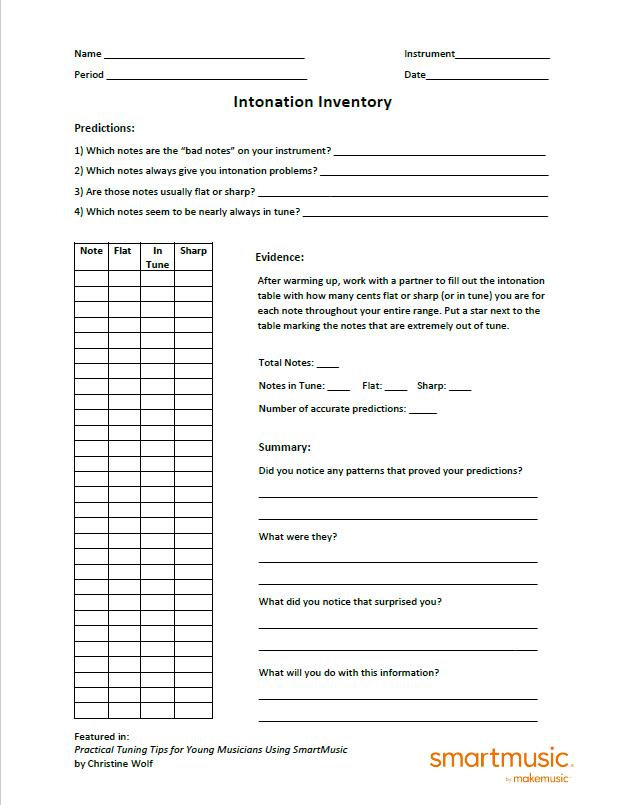
Many stereotypes are floating about that characterize young musicians as being unable to play with good tone and with developed intonation. As experienced music educators, we understand that young ensembles CAN and DO have the ability to produce high quality sounds. Young musicians are also able to manipulate pitch when taught in a progressive and consistent format.
The first step to managing and teaching intonation to young musicians is in the development of the students’ fundamental pitch and tonal center. Spending regular time focusing on these skills over a long period of time (not just at the beginning of the year) will build the long-term skills that students need to have in order to have a secure fundamental pitch on their instrument. Examples of a fundamental pitch for some instruments are as follows:
- Oboe: Reed Crow should sound a C
- B-flat Clarinet: F# on mouthpiece and barrel
- Bass Clarinet: F# on mouthpiece alone
- Alto Sax: G# on mouthpiece and neck
- Tenor Sax: E on mouthpiece and neck
- Baritone Sax: D on mouthpiece and neck
Once students can produce fundamental pitches consistently on smaller parts of their instruments, they are better able to manage the more intricate details of intonation. I often tell my students “you must be in tune with yourself before you can be in tune with the band.” This statement is a reminder that when a student plays the interval of a Perfect Fifth, did they truly play a P5? The ability of a student to recognize and adjust comes from regular and consistent repetitions on understanding their instrument’s intonation tendencies. One of the ways in which students can discover these tendencies is through an Intonation Inventory.
The Intonation Inventory is an activity that can be assigned multiple times throughout the year for students to track their personal intonation tendencies and adjustments. After a full warmup and doing a fundamental tuning of the instrument, students first make predictions to several questions.
- Which notes are the “bad notes” on your instrument?
- Which notes always give you intonation problems?
- Are those notes usually flat or sharp?
- Which notes seem to be nearly always in tune?
Using the tuner on SmartMusic or a personal tuner, students will team up with a friend to fill out the intonation table with how many cents flat, sharp, or in tune they are for each note throughout their current entire range (it does not make sense to have students attempt to gauge the intonation for notes that they do not currently play with control). In the far-left column, they will star notes that are extremely out of tune. Students can also access SmartMusic’s LoFi Long Tones exercises by first practicing with the accompaniment, then practicing without it while having the SmartMusic tuner on (in separate tab/window) so they can continuously check their intonation tendencies.
After completing the chromatic intonation evaluation with their partner, the student can respond to the following questions.
- What number of predictions did you get accurate?
- Did you notice any patterns that proved your predictions?
- What were they?
- What did you notice that surprised you?
- What will you do with this information?
Of course, the Intonation Inventory is just one of many techniques to teach and reinforce intonation tendencies with individual players in the ensemble. Students should also be reminded of the role of breath support, posture, reed selection, dynamics, pad/key adjustments, room temperature, and playing position when completing their Intonation Inventory.
The quest for well developed intonation in our ensemble is never over and using as many tools to help our students to firmly grasp this often-nebulous concept is crucial to the success of every ensemble. Using the SmartMusic tuner and an Intonation Inventory might be a tool and activity to add to your toolbelt this school year:
